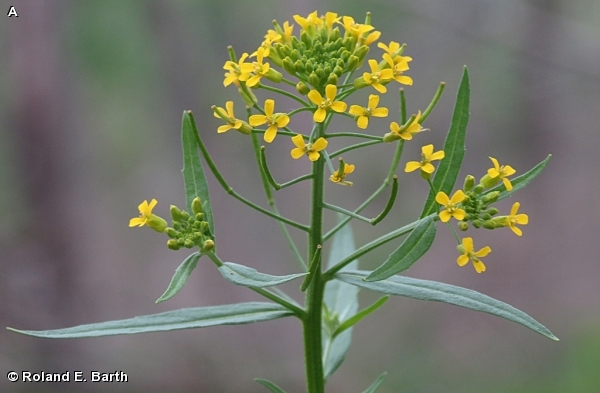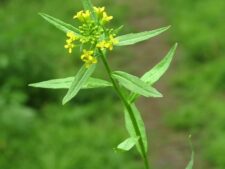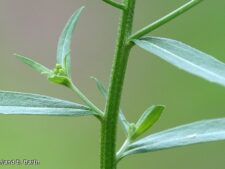
This wallflower has the typical yellow flower clusters found on a number of weedy mustard species, along with the fruit, a 1 inch long slender pod (silique), which forms below as the flowers wilt. One of several possible members of its genus, this species can best be identified by the presence and microscopic characteristics of the appressed hairs on the leaves and stems. The leaves, with a few teeth on the leaf edges, are lance-shaped all the way down the stem. Biology Professor David Sutherland of the University of Nebraska at Omaha helped with the identification to species.
A colony of this weedy mustard species was first found on the floodplain of Fontenelle Forest in the Spring of 2013, The seeds were probably brought in during the foods of 2010 and 2011. The abundance is currently (2013) considered to be uncommon. Like other weedy annuals which thrived on the bare mud and sand deposited by the flood, this plant is now rare or impossible to find.
The name wormseed apparently derives from its traditional or folk medicine use to treat intestinal worms.
The content of NatureSearch is provided by dedicated volunteer Naturalists of Fontenelle Forest who strive to provide the most accurate information available. Contributors of the images retain their copyrights. The point of contact for this page is: Roland Barth.

 Identification
Identification
